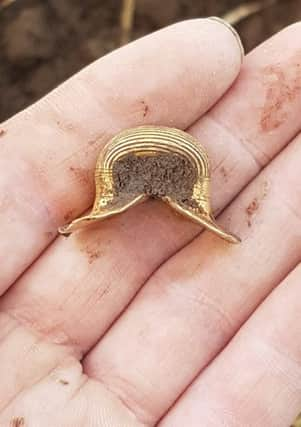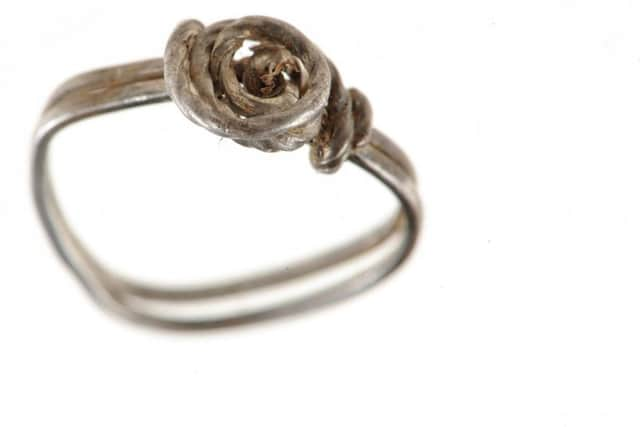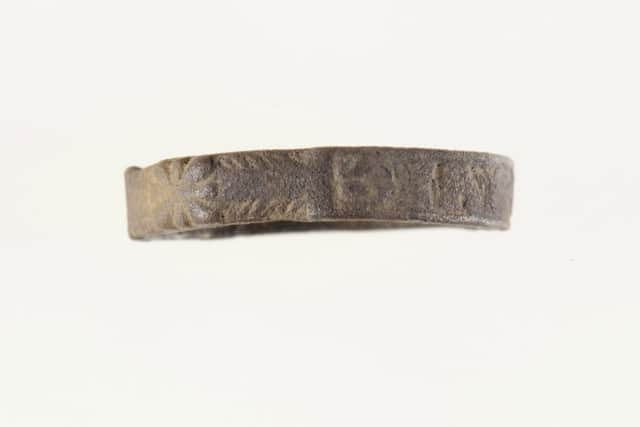David strikes gold... and silver with discovery 3,000 years on


A second find from 43-year-old David Murdoch from Bangor was also declared treasure in the Coroner’s Court in Belfast yesterday – a Viking silver ring of 9th to 10th century origins found near Groomsport.
Mr Murdoch, who made the discoveries at the end of last year, was one of four men in court over the past two days to learn that their discoveries are classified as treasure.
Advertisement
Hide AdAdvertisement
Hide AdDuring the inquest – to determine if treasure has been found – Mr Murdoch described the moment he pulled the gold object, believed to be a sleeve-fastener, from the mud as “heart stopping”.


After the inquest he told the News Letter: “It’s amazing to think it had been sitting waiting for me for around 3,000 years to find using a kids’ detector.”
He explained that he bought two basic metal detectors in 2016 so he could pursue the activity with his 16-year-old son: “The detector I got – on some sites it’s listed as a children’s detector. My son and I went out a few times but he lost interest even though we found Bronze Age gold and Viking silver. There’s no pleasing some people.”
Also in the Coroner’s Court yesterday was Mark Spence who had found a fragment of 9th to 10th century Viking Ballylesson hacksilver (hacked from jewellery and used as a means of payment) near Drumbo in Co Down.
Advertisement
Hide AdAdvertisement
Hide AdOn Monday an inquest was held into two further finds by Sean McNicholl and Ryan Shiels.


Mr McNicholl had discovered a silver brooch at Lisserluss, near Dunseverick, Co Antrim. According to the National Museums NI it is of a type generally referred to as penannular brooches which would only have been worn by ‘high society’.
Mr Shiels was responsible for the discovery of two Medieval silver rings dating back to the 13th or 14th century, found a short distance apart at Bright, near Ardglass in Co Down.
One of the ring’s decoration includes traces of lettering which may read a version of ‘IESU REX EXAUDI NOS’ – ‘Jesus, king, hear us’.
Advertisement
Hide AdAdvertisement
Hide AdDr Greer Ramsey, curator of archeology with National Museums Northern Ireland, said the items would now go to the British Museum to be looked at by the treasure valuation committee. Once valued, they would be offered to National Museums Northern Ireland at that valuation, with the amount spilt half and half between the finder and the person who owned the land it was found on.